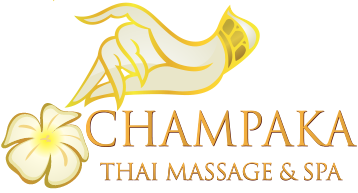Thai Massage is all about stretching, right? Wrong! The stretches look fascinating, and they are a unique and highly developed element in Thai Massage. However, there is a lot more than stretching to this healing art.
A Thai Massage session which consists of some stretching, but is more like an applied yoga session or an exercise routine. For some people this might be just what they want, and for others this is simply too much.
THAI MASSAGE FOR EVERYONE
Luckily there are other elements in Thai Massage to accommodate every kind of person, and every degree of intensity. In the hands of an expert practitioner, a session can be gentle or strong, faster or slower, challenging or relaxing, intense or trance-inducing.
Thai Massage can literally be done an ANY kind of person regardless of age or degree of flexibility, provided the therapist has learned more than a one-size-fits-all sequence. This is unfortunately often the case during short training courses.
For a good, flowing, and effective session, all four elements have to be combined. Let’s analyze these elements:
THAI MASSAGE ELEMENT #1: MASSAGE
It is called Thai Massage, for a reason. There are many techniques like pressing, leaning, rolling, rocking, squeezing and circling which are used by the therapist.
THAI MASSAGE ELEMENT #2: ENERGY LINE (SEN) WORK
Or sen line work, as it is called in Thailand. Thai Massage uses actual physical massage movements which are done along those energy lines and meridians.
To the untrained eye, it all looks like massage, however the physical massage techniques follow the path of the sen lines. This is quite different from the western model where the therapist works on anatomical components like muscles, ligaments, and joints.
In the western model the focus is on the anatomy, whereas in the eastern model the focus is on improving energy flow in the sen lines. This is a fundamentally different concept.
THAI MASSAGE ELEMENT #3: STRETCHING
This is what this system is famous for and where the name Thai Yoga Massage is derived from. The stretches are related to yoga asanas. This is not surprising since this healing art has its roots in India’s yoga system.
The fallacy is to think that Thai Massage is mostly a system of stretches. This is incorrect and only a partial picture.
THAI MASSAGE ELEMENT #4: THE REAL ART OF IT
The fourth element is what ties the other three together and makes them work harmoniously: sensitivity, feeling and intuition. This is especially important in Thai Massage. For example the sen lines are not just a mechanical technique. They need to be felt and sensed in order to be effective.
Or take the elbow or knee work of Thai Massage. Imagine a practitioner sticking an elbow in your back without sensitivity or feeling. This can get painful or even brutal pretty fast, and that’s why this modality sometimes has the reputation of being a painful system.
Therefore feeling and sensitivity are absolutely essential for both stretching and sen line work as well as for all the massage techniques.
You might say that this is necessary for all massage systems, and this is correct.
However it is even more important for Thai Massage since it deals directly with energy lines, it uses often massive stretching techniques, and it uses elbows, knees and feet. So the risk of overstretching or using too much pressure is greater in Thai Massage than in most western modalities.
Feeling, sensitivity and intuition are the elements which connect the first three elements of in a harmonious way. They create a flowing and artistic way which combines massage moves, energy line work and stretches into a beautiful and highly effective healing arts system.



